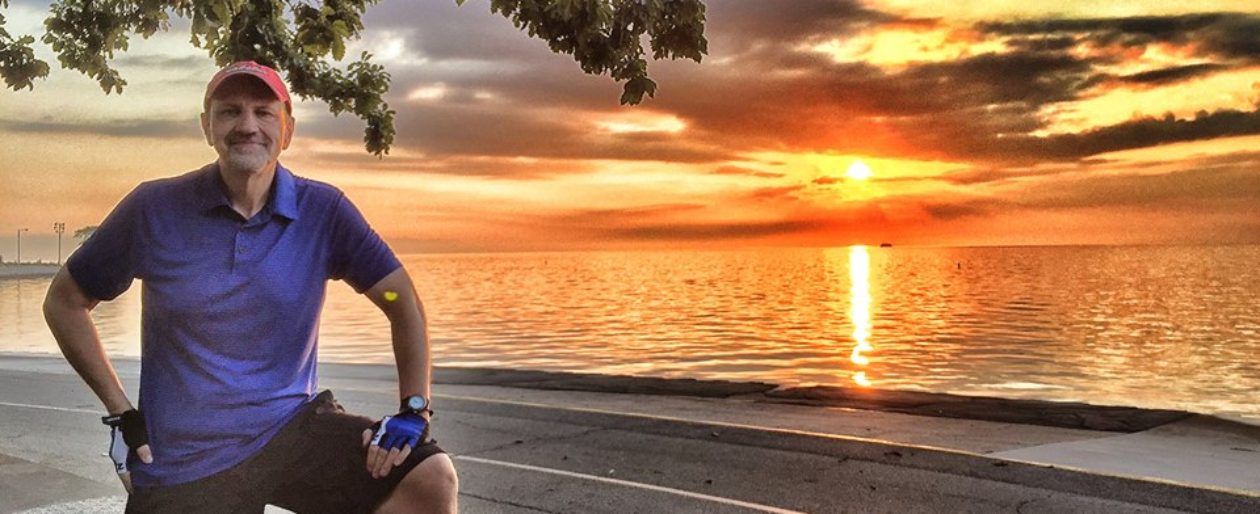I’m not a very sporty person, but there are outdoor activities that I enjoy doing, with hiking being my favorite. This long-time hobby got an additional personal boost when I transformed a plain cargo van into Violet the camper van. Violet has allowed me to hike all over the country using her as my basecamp.
I am a day hiker as opposed to a backpacker. I like to return to my camp at night. After all of these years, you may think that I would consider myself an experienced hiker, but that is not the case. I wouldn’t call myself seasoned for one simple fact. Despite hiking for years, it is very easy for me to become disoriented on the trail. I used to feel bad about my lack of ability, but I now realize that I have an inherent poor sense of direction. I’ll never be the person who could find his way home after being dropped off in the middle of nowhere.
I often hike solo, and so I always carry safety gear with me, “just in case.” I bring my own modified “Ten Essentials.” These are ten categories of things that every hiker should carry when they are adventuring. In my case I have emphazied navigation tools because of my inadequacies. Some have told me that I am too obsessive in this regard which prompted me to research the topic of lost hikers in greater detail.
There is a surprising amount of information about hikers who go missing every year. This information is contrasted by a surprising lack of aggregated hard statistics on this topic. Writer and researcher David Politis has made a career of researching lost hikers in national parks. When he asked the National Park Service for statistical information on this subject, he was told that none existed. When he pressed further for this public information, he was told that he would have to pay millions of dollars for the NPS to compile the data.
Mr. Politis’ has written books and produced movies under the “Missing 411” title. He has documented hundreds of people who went missing from wilderness areas, never to be seen again. His reports are both interesting and tragic. Most of his stories involve healthy individuals who disappear without a trace. How often do hikers go missing? That remains a mystery, but I have uncovered some information that may surprise you.
The majority of those who become lost are day hikers, not backwoods explorers, hunters, or backpackers (although they also go missing). Most will be found within 24 hours, but the chance of finding someone alive and well after 72 hours of searching is slim. Day hikers not only get lost more, but they are typically more vulnerable when lost as they are not prepared to deal with an extended wilderness stay.
Approximately 3000 search and rescue missions are conducted every year in the national parks. The US manages other public lands, but it was more difficult to obtain statistics on these sites. There are 157 National Forests in the US. I was able to find that one of them, the Angeles National Forest, had almost 170 search and rescue missions during a recent year. Based on this number, it is reasonable to assume that the total number of search and rescue missions for all national forests is also in the thousands. The Bureau of Land Management (BLM) governs almost 250 million acres of other public access lands. I was able to find documentation of hikers and others going missing on BLM land, but I was unable to obtain any hard statistics on these massive areas.
There are also reported cases of missing individuals who were hiking in state parks. In the US there are over 6000 state parks, but there is no central database that lists lost hikers on these lands. Lastly, there are documented cases of individuals going missing on Native American reservations and private tracks of land. Here too, there is no central clearinghouse of data that catalogs these events.
Another surprising fact is that many people go missing on well-traveled trails. There are reports of people going missing while hiking on short, paved, and popular paths.
One hundred individuals who got lost and then found in the Great Smokies National Park were interviewed about their experience. The most common reason for getting lost was getting off the correct trail. Other common reasons included a worsening of the weather, trying to hike in darkness, various injuries, and falling off the path. Only 24% of these individuals found their way back to civilization independently; the rest had to be rescued.
Survivalist Greg Ovens says that the number one killer of lost hikers isn’t animal predation; it is hypothermia. He notes that it is possible to become hypothermic even when it is 70F if the weather is damp and windy enough.
After reviewing dozens of missing hiker’s cases, I was struck by the number of instances of hikers who went missing while hiking with another person or in a group. These individuals wouldn’t be able to benefit from the supplies that a more conscientious hiker had if there were separated from that hiker. Because of this, I wanted to put together a small Ten Essentials kit that I could lend or give to those that were hiking with me. The packet needed to be reasonably compact yet contain items that would increase their chance of survival if they left the trail and became lost. I think I accomplished that goal, and you can view my efforts in the video below.
Happy Hiking!

